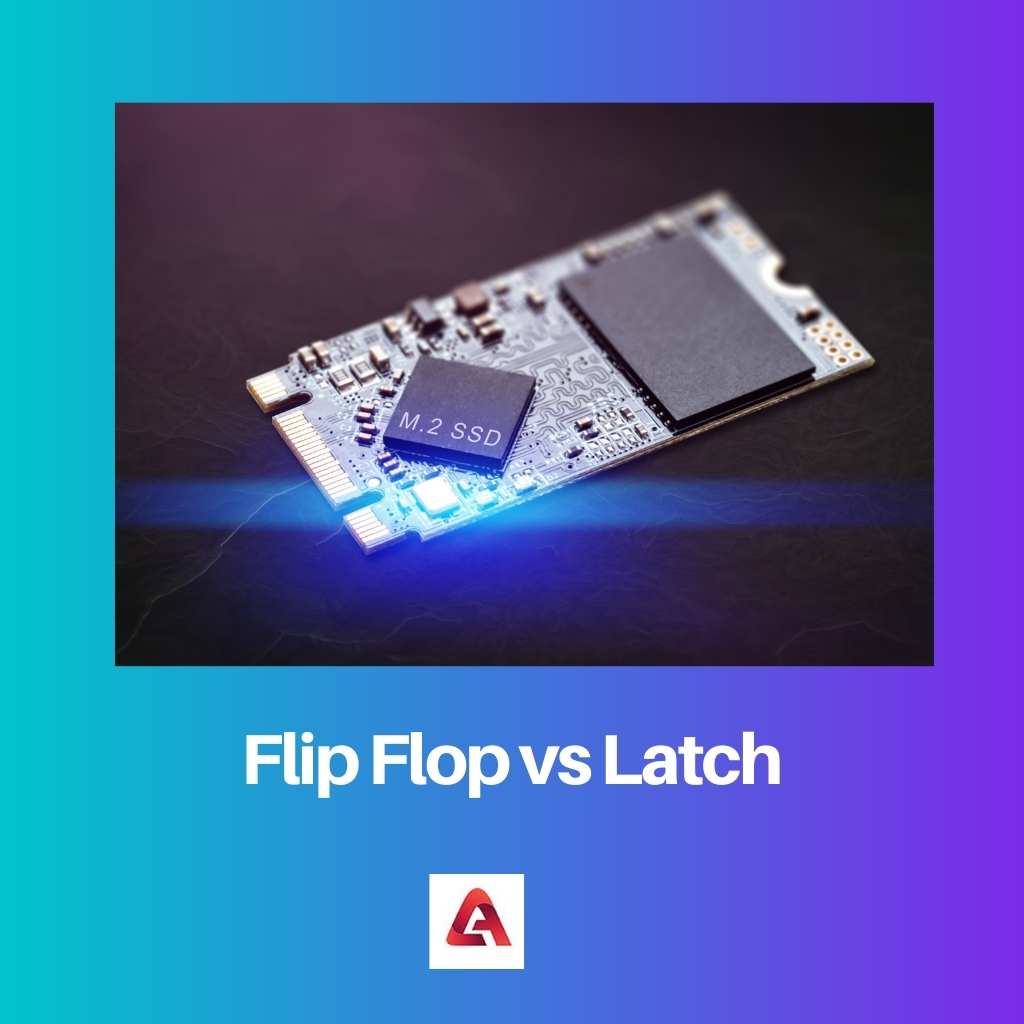Digital memory is a growing technology nowadays. The flip flop and latches play a vital role in digital memory sectors. They have various applications in computers and communications.
They are used to repeatedly change the state and store the state information of devices. Both are electronic logic circuits.
Key Takeaways
- Flip flops use a clock signal to control data input and output, whereas latches do not require a clock signal.
- Latches are level-triggered devices, whereas flip flops are edge-triggered devices.
- Flip flops have higher data stability and are less prone to glitches than latches.
Flip Flop vs Latch
A flip-flop is a sequential logic circuit that can store one bit of binary data. It has two stable states, either high or low, which represent the two possible binary values. A latch is a level-sensitive circuit that can also store one bit of binary data. It is simpler than a flip-flop and has only one input, which controls the state of the output.

The flip flop is nothing but a circuit that has two stable states. The primary function of the flip flop is to store state information. The flip flop is a multivibrator. A multivibrator is nothing but an electronic circuit, that has many simple two-state operations.
Signals are applied in flip-flops to change the state. The signals are applied to control inputs and outputs. In digital electronics, a flip flop plays a vital role as a building block. It is used in personal computers, systems, and communications.
The latch is nothing but an electronic circuit to store the state information. The latch consists of two stable states. To retain the information, the latch uses the feedback mechanism. The latch can act as a memory device.
The latch can store the information until the device is powered on. When input changes, latch changes the stored information. In simple latches are level triggered devices. Until the enable signal is on, the latch continuously samples the input.
Comparison Table
| Parameters of comparison | Flip Flop | Latch |
|---|---|---|
| Clock signal | Flip flop has a clock signal | The latch does not have a clock signal |
| Operating speed | Flip flop has a slow operating speed | Latch has a fast operating speed |
| Classification | Flip flop classified into two | Latch has no classification |
| Power requirement | Flip flop needs more power | Latch needs less power |
| Circuit analysis | Easy | complex |
What is Flip Flop?
The flip-flops are nothing but data storage elements. The flip flop consists of two different states. One of its states represents one and the other state represent zero. The flip flop stores a single bit or binary bit data.
The data stored in the flip flop help to store the state information. The flip flop circuit is called sequential logic. When the flip flop is used in the finite state machine, the output of the machine depends on two things.
It depends on the current input and current state to get the output. The flip flop is also used to count the pulses and timing signals.
Level triggered and edge-triggered are the common type of flip flops. The level-triggered flip flop may be transparent, asynchronous, and opaque. The edge-triggered flip flop may be synchronous and clocked.
The flip flop store the binary data using the gates. In 1918, the first electronic flip flop was invented. The British scientist William Eccles invented the first flip flop. In the early days, it is called the Eccles-Jordan trigger circuit. The early days flip flop has two active elements.
Flip flop has many different types. The common types of flip flops are SR, D, T, and JK. The SR denotes set-rest flip flop. The D refers to delay or data flip flop. The T mentions the toggle flip flop. Depending on the behaviors, they can be classified into many.
What is Latch?
The latch is nothing but a bistable multivibrator. There are different types are latches are available. They are SR latch, Gated SR latch, D latch, and Gated D latch. The latch is nothing but a single bit or a binary bit memory device.
In asynchronous systems, the D latch is used in input and output ports. In two-phase systems, data latches are used to reduce the transistor count. Latches have many modern machine applications. Latches are somewhat similar to flip-flops.
Latches works in two different states. The two different states are described based on the triggering level of the latches. The two states are Active-High and Active Low.
Active-High: Both the inputs are low. Either of the inputs can be triggered to high.
Active-Low: Both the inputs are low. Either of the inputs can be triggered to low.
Latch has many advantages. Latches are fast working devices which mean it does not need clock signals. They are designed to work faster. Compared to others, latches need very little power. Latches-based devices have simple and small sizes.
Time borrowing is the major advantage of latch, which means during execution it can borrow time from operational timings. Latches also have disadvantages. It affects race conditions.
Latches have more chance for metastability. The level-sensitive property of latches makes it difficult to analyze circuits.
Main Differences Between Flip Flop and Latch
- The flip flop is sensitive to the inputs and clock signals, whereas latches are sensitive to the inputs only.
- The flip flop performs synchronous operations, whereas latches perform asynchronous operations.
- When compared to flip flops, latches are less robust.
- Flip flops can be used as register, whereas latches cannot be used as registers.
- Flip flop does not respond to the fault, whereas latches are highly responsive to the faults.




